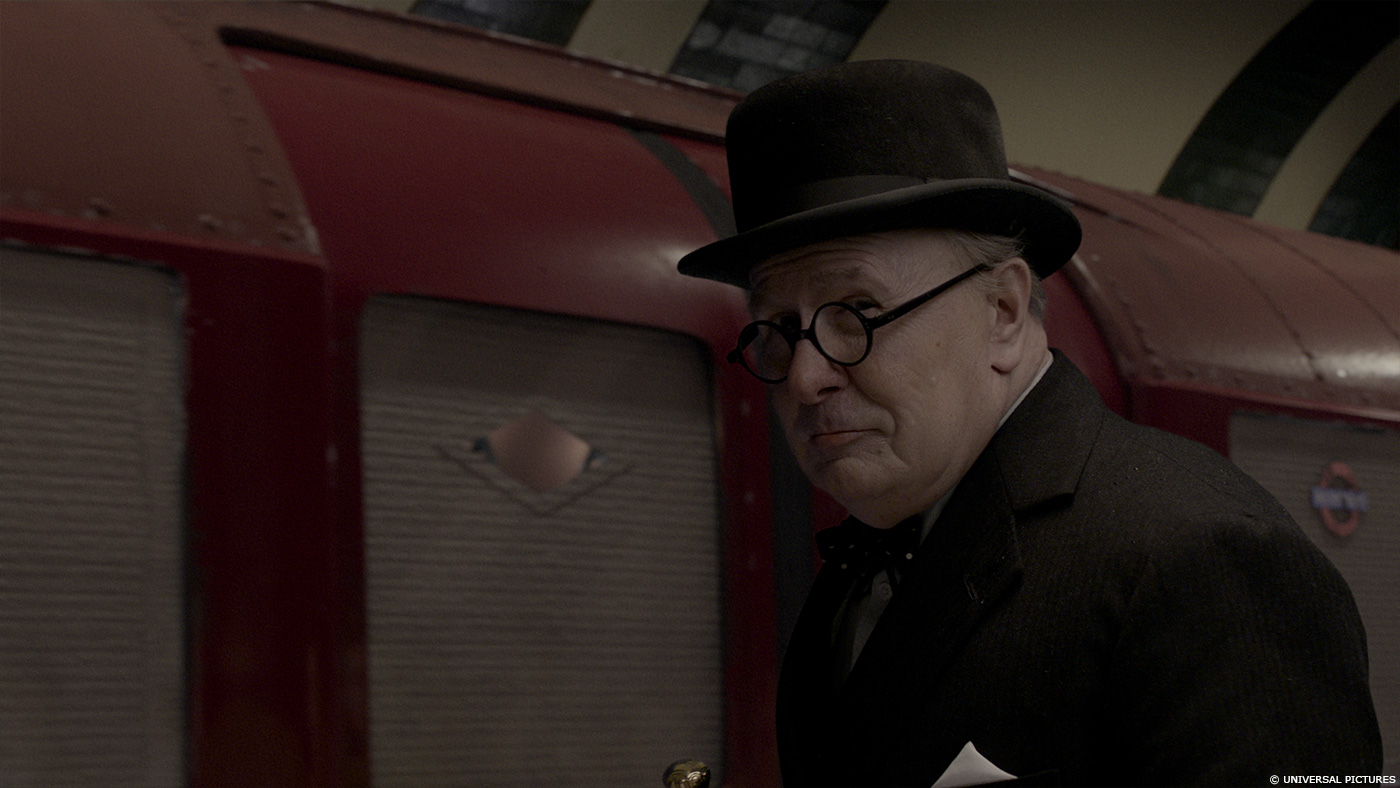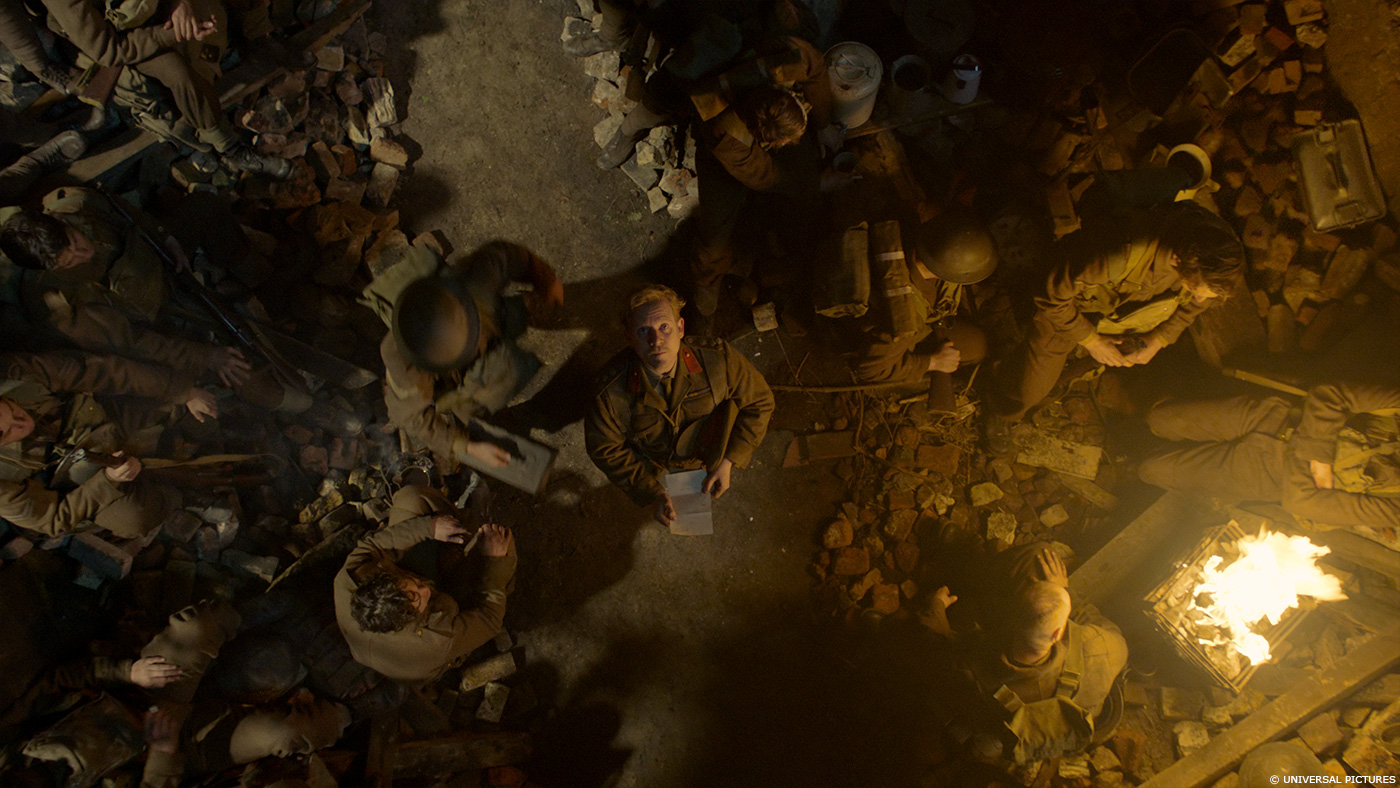Stephane Nazé has been working in visual effects for more than 20 years. He worked at BUF and Method Studios before joining Framestore in 2014. As VFX Supervisor at Framestore, he took care of the effects of PAN, NOW YOU SEE ME 2 and FANTASTIC BEASTS AND WHERE TO FIND THEM.
What was your feeling to work again with director Joe Wright?
PAN was my first show at Framestore and I learned that Joe Wright has a strong vision for what he wants to achieve, and I was therefore really excited to collaborate with him again.
How was this new collaboration?
Totally different: on DARKEST HOUR we had a direct link with Joe and Framestore’s Montreal facility was the only vendor on the movie. This time it was a collaboration between Joe Wright, Valeri Bonelli (editor), Tommaso Gallone (1st assistant editor) and Framestore! Joe Wright loves face to face interaction and it not possible for this show (he was based in London), so we had to show him that we were able to do the work to earn his confidence!
What was his approach and expectations about the visual effects?
DARKEST HOUR is not a film about VFX. The approach was to be accurate historically, to build an « invisible effect », more as a support for the shots and for the story. We got a lot of references from the art department and we undertook a lot of historical research. A few guys in the team had a good knowledge of WW2, so that helped!
How did you organize the work at Framestore?
A very good question! DARKEST HOUR was not a big show, most of the shots were a one-off shot. A lot of assets to set-up! The budget was not huge and the shot count was not massive (90 shots), so, you have to find artistic and technical solutions to make it possible! The key was to involve the team in the decision making to be sure we weren’t wasting our time. It’s always challenging to work on a « small » show within a big company!
There is a beautiful shot that starts from the fields of war and ends on a face. How did you approach this shot?
We received 2 plates: one of the soldier’s face and one of the French landscape. The plate with the face is pretty close to what you get in the film, except of course we did a little clean up work and stabilization. But for the fields of war, it was not the same story. The plate was shot in day time and didn’t really show the audience anything. To get more control on the camera movement we decided to build everything from scratch for this part of the shot. We did some historical research to find footages of WW2 bombing as a support for the FX artists to mimic the shape, the timing, the look of the explosions, and for the modellers, the shape of the craters. Also it was useful for the compers to mix all the layers and to get something accurate. Joe Wright was involved in the choice of all our references.
Can you explain in detail about the design and creation of this shot?
After a bit of stabilization we did the tracking of the plate with the soldier. Then we extended the camera, to get more frames to be able to start the camera movement on the French battlefield. For the field, we sculpted roughly the shape of the soldier`s face at the end of the camera movement to help with the transition. Everything is CG: explosions, fire, landscape, vehicles and crowd; and of course a lot of comp love! The field is based on picture references, archives, and the dynamic of the explosion on videos of the WW2. Subtle shockwaves have been added for the impact of the explosions to get something more realistic.
How did you recreate a period London?
Same approach, we got very useful references from Sarah Greenwood (the production designer), and some concept art as well. We Lidar scanned most of the buildings; the idea was to add « CG dirt » with textures and not to proceed with a DMP approach to get a very consistent sense of scale and depth.
Which part of London was the most complicated to create and why?
Somerset house! We shot the view from Buckingham over there, and we got 3 hours only (between 6am and 9am, just before the opening). The shoot has been quite intense and everyone had to be efficient. Also, we got a minimum of references to create the BG: the view from Buckingham to he Mall; organizing a photo-shoot from the Palace was impossible.
Can you tell us more about the shot that starts with Winston on the roof and goes in the air?
Initially the plan was to shoot Churchill with a Drone from the rooftop of the production office in central London. The location fit perfectly with the design/expectations of the director. So, we did it, but things didn’t happen at all as expected. We got some very « British » weather; wind and rain. Therefore we decided to re-shoot Churchill on stage to get maximum control with the camera and also not to be restricted by the capricious weather. We built the environment in CG based on Google Views and archive pictures of the 40s. For the rooftop with Churchill, we Lidar scanned and photographed the initial location of the production office.
How did you create the various FX elements such as the explosions?
Everything is based on historical footage and YouTube references. The FX guys were involved at the very beginning of the show, mainly because on some shots like the aerial French battlefield almost everything in the framing is smoke, explosions, fire and water.
In a long aerial shot we discover the Winston’s fleet of boats that go to Dunkirk. How did you create so many various boats?
The plan was to create 7 hero boats, and from those, to create many variants of textures, shaders, and amount of crowd to give the illusion of variety.
Can you tell us more about the water simulations and interactions?
We replaced the water surface in the plate, only the water interaction around the first 3 boats (and because they are real) has been kept, everything else has been simulated. The tricky part was to track the plate, almost mission impossible due to the movement of the water, the plan was to mimic the same speed, frequency, scale to get a good match with the 3 boats from the plate. At the end we got a CG water surface matching quite well with the plate. For the interaction we got from the FX guys a layer of interaction for the boat’s hull.
In a beautiful sequence Winston Churchill is taking the Tube. Can you tell us more about your work on it?
The shoot happened at Aldwych Station, a closed station on The London Underground. The tube itself is CG for the shots when the metro arrives on the platform. We organized a photo-shoot at Acton Depot, for texture references and for the shape of the carriages.
Gary Oldman’s makeup is really impressive. Did you need to enhanced it on some shots?
Before we saw anything we assumed that we’d have to do a lot of clean-up work on the prosthetic for Gary Oldman. But because the result was stunning, we didn’t do so much, we did minor tweaks on 10/15 shots, no more. This makeup is, so far, the best I have seen in my career.
Is there any other invisible effects you want to reveal to us?
Nothing major, the plan was to keep a maximum of things in camera.
What is your favorite shot or sequence?
The French battlefield ending on the soldier’s face
What was the main challenge on this show and how did you achieve it?
The main challenge was to be historically accurate. We got a big bunch of references from the art department, and we did a lot of research on our side as well. The idea was to show to Joe W. that we were matching our work to something correct.
What is your best memory on this show?
There are so many good things, it is a bit hard to pick one but, so far, my best souvenir happened during the recce, 4 of us: the director the DOP the first assistant and myself got the opportunity to go up at the top of Big Ben to assist at the change of hour, it was magic!
How long have you worked on this show?
10 months including the shoot.
What’s the VFX shots count?
90 shots after the omits.
What is your next project?
DEADPOOL 2
A big thanks for your time.
// WANT TO KNOW MORE?
Framestore: Dedicated page about DARKEST HOUR on Framestore website.
© Vincent Frei – The Art of VFX – 2018
























